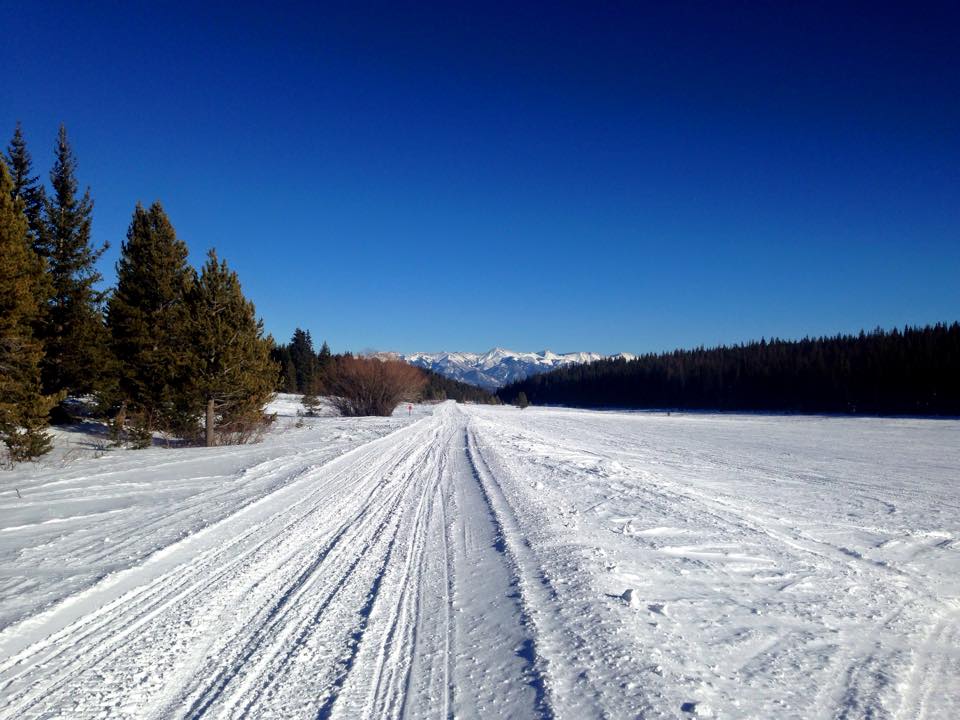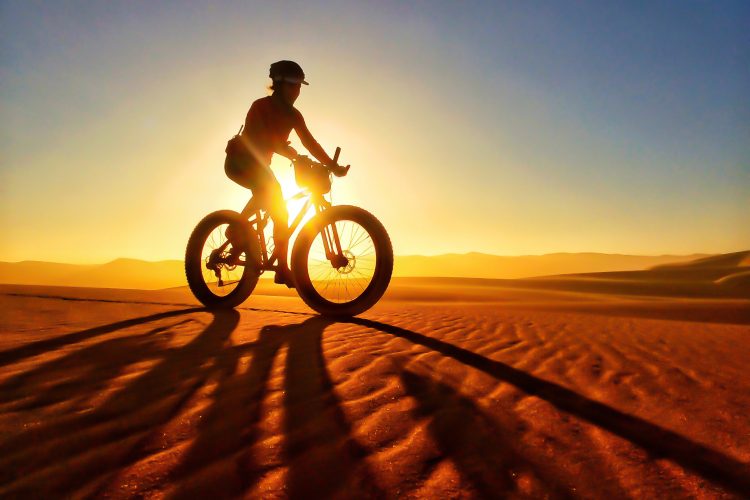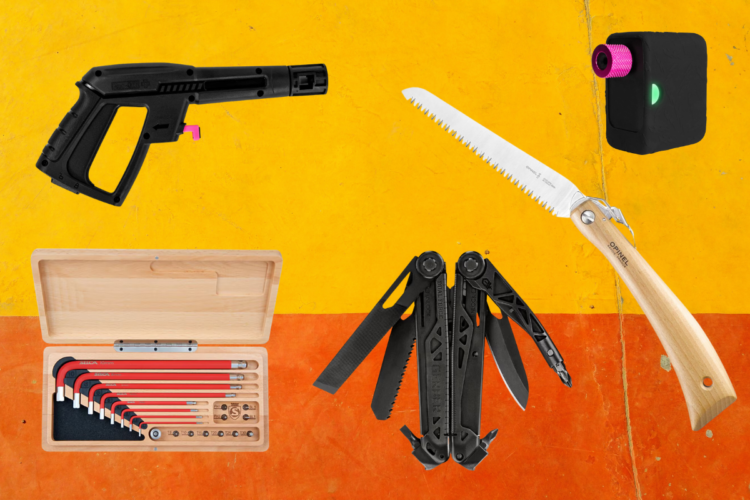I’ve asserted before, and I’ll say it again: being able to fat bike in the snow has revolutionized the way many riders view the sport of mountain biking. For riders located close to the poles of our planet, fat bikes have allowed this sport to go from a half-year pastime to a full-blown year-long addiction. Being addicted to bikes is way better than being addicted to crack, just sayin’.
However, there’s a caveat: you can’t just ride your fat bike any ole place. Granted, they are stupendously versatile, but it’s just not physically possible to pedal through snow that’s too deep. Consequently, the ideal fat bike conditions consist of packed snow (or at least places where the soft snow is no deeper than a couple of inches).

While we’ve been collecting information in our trail database about fat bike access on mountain bike trails and dirt roads for well over a year now, some of the very best places to ride fat bikes are hardly worth riding during the summer, or might not even be open to bike travel during the summer. There are a few trail systems and mountain bike advocacy groups that have their act together and are grooming narrow, two-foot-wide swaths of snowy singletrack through the woods—so if you have one of those nearby, you’re set!
But if you don’t have a fat bike-specific grooming operation near you, how do you find these magically-compacted strips of frozen precipitation? Here are 5 ways to find the best bikeable snow near you:
1. Snowmobile Trails
Some people might not realize this, but the modern ATV was birthed from the desire to bring the snowmobiling experience to the summertime. In fact, snowmobiles preceded ATVs by at least 16 years, if not more in many cases. Suffice it to say, snowmobiling is a long-running sport—much older than modern mountain biking—and there are millions of snowmobilers in the United States, with a claimed annual economic impact of $26 billion.
What does this mean for fat bikers? Snowmobilers are a wealthy, established user group with a lot of clout and they naturally do a fantastic job of packing down trails through the mere process of travel. Not only that, in many places snowmobilers already have a well-organized grooming effort on the most popular trails. Both of these things mean that snowmobile trails are excellent places to fat bike!

Unfortunately, snowmobilers as a whole don’t seem to be as coordinated as mountain bikers, with no major international snowmobile trail database like Singletracks. However, usually you can find good resources for snowmobile trail information at the local, or sometimes state, level. In the Midwestern United States and much of Canada, there are literally thousands of miles of snowmobile trails crisscrossing the landscape, offering endless opportunities for snow biking.

Near my hometown of Salida, Colorado, the best places to fat bike on snow are indeed snowmobile trails. The local groups even post online grooming reports to keep snowmobilers up to date on snowfall amounts, trail hazards, and the last time the trails were groomed with a snowcat:
Of course, this information is exceedingly useful to mountain bikers, too! Check around your own area and locate the best sources of snowmobile information. But, as always, be sure to follow the local regulations: some counties and states are considering banning fat bikes from snowmobile trails since they move so much more slowly than snowmobiles, and some counties have already imposed specific regulations such as mandatory rear lights on bicycles at all times. Be sure to adhere to your local regulations.
2. Snowshoeing Trails or Popular Hiking Trails
Granted, there are a few downsides to riding snowmobile trails. Usually they’re the size of a roadway, and if they’re very busy they can get noisy and crowded. Add in the fact that these machines hurtling over the snow can hit 70-100 mph in a matter of seconds, and riding a bike with them can be downright scary if you can’t see or hear them coming.
If you’re in search of a quieter, singletrack-based experience, the best place to look is at popular snowshoeing trails. Just a few snowshoers passing through in a single line can pack in the snow enough to ride, so wait a little while after the most recent snow, and give it a go!

The bonus of riding these trails is that they’re often in the beautiful, iconic areas that we already ride our mountain bikes during the summer. The downside? You’ll still need to follow all summer trail regulations pertaining to bikes. If a trail is off limits to bikes during the summer, don’t expect to get away without a fine if you try to ride a bike on it in the wintertime.
Double bonus: If you have a dedicated group of individuals, you can make your own fat bike route! Just pick a likely mountain bike trail, probably one that has a relatively low or consistent grade and is relatively non-technical, grab some snowshoes, and get that trail packed down a bit! Once it’s packed down some, continued bike travel over the trail will only improve conditions… at least until the next big dump comes, and you have to begin the process all over again.
3. Cross Country Skiing Trails
Out of all packed snow routes that aren’t expressly designed for bicycles, these are easily the most ideal. The snow is packed, the trail is relatively narrow, and you don’t have any machines hurtling by you at 100mph.
The downside? These are currently the most controversial places to fat bike. Many cross country ski organizations and facilities have banned fat bikes since, if conditions are less than ideal, bikes can occasionally make ruts in the groomed surface that make it difficult to ski on.

If you’re going to try to fat bike on a cross country ski trail, please ensure two things:
1. Make doubly sure that fat bikes are allowed on the trails you plan to ride, or at the very least that the trail is on public land and doesn’t have any travel restrictions currently in place. While many cross country ski areas were initially closed to fat biking, successful advocacy in many areas has resulted in opening some or all of the trails to bikes.
2. Ensure that, based on the time of day you are riding, the current temperature, and the moisture content of the snow, that you don’t leave ruts in the surface. If you’re leaving a rut, please stay off the trail so that access isn’t ruined for other riders in the future.
4. Ski Resorts
Many ski resorts, especially in the Western USA, operate under a lease on national forest land, so the ski resorts only have a certain amount of control over the land and who has access to it. Consequently, many of these ski resorts are open to uphill travel during the winter, and regularly have people accessing the ski runs via human power and climbing skins.
So why can’t fat bikers ride the same runs? Answer: if the ski area is indeed one of those that allows uphill access or is one that cannot disallow it, fat bikers should be able to access that terrain, too. Again, I’d recommend doing some research to discern exactly what the legalese is governing your local area.

One more word of advice: I only recommend biking the ski runs after the lifts have stopped spinning for the day (or before they open in the morning). While perhaps you might be able to legally ride around the lower-angle trails while skiers are whizzing by, taking a bike onto a green run filled with flailing n00bs who don’t know how to turn is a recipe for disaster. But be judicious about when and where you ride, and you’ll probably be fine.
5. Frozen Bodies of Water
This fifth and final tip is only for the most adventurous, but that adventurous spirit can pay great rewards! If you live in a place where the ponds, lakes, and rivers freeze solid, those flat expanses can be transformed into the routes that fat bike dreams are made of!
As long as the snow isn’t too deep, has settled, or has been packed in significantly (maybe by snowmobile traffic?), these areas are true gold mines. Frozen rivers and streams transform into ready-made trails through the woods, away from the confines of civilization. Broad lakes may be windswept and desolate, but they offer a raw beauty that is unsurpassable. And best of all, when else can you ride a bike in these places? The combination of frozen water and fat tires offers up biking opportunities that were never before imaginable!

As an added bonus, almost all lakes and waterways are open to the public. While access might be controlled by riverfront private property in places, in general, once you’re on the river or lake, there are no legal issues to worry about.
Caution: of course, riding in these places can be dangerous if the ice isn’t thick enough. Use caution, especially on shallow, flowing streams and rivers. Those areas are much slower to freeze solid, and may never form a thick layer of ice in some places.
Fat biking is rapidly changing the way that we look at the sport of mountain biking. These are only a handful of places that might be rideable during the winter months; there could be others, and of course fat bikes create tons of riding opportunities that weren’t possible during the other three months of the year, too! So get out there and explore, and continue to push the limits of what’s possible on a bicycle
Your turn: Where have you found the best snow to fat bike during the winter?





















6 Comments
Feb 3, 2015
I am still not sold on the Fat-Bike. I can't justify purchasing a bike that is the best at what it does for such a small portion of the year.
My friends and I ride all through the winter on our NON-FAT bike. Yes I am sure we are slower than the fat bikes, and yes, we probably have to walk more that a fat-bike rider, BUT we get to use the money we didn't spend on the fat bike for other toys.
It is my contention that a fat bike makes a good 3rd bike, and has less of a priority than purchasing a Go-Pro, Garmin or a light kit for night riding.
With that said, it I enjoyed reading your article. Thank You.
Feb 16, 2015
Feb 16, 2015
Feb 16, 2015
Since I will probably be buying a replacement soon, and I only have sufficient funds for a single purchase, my question to you is; how much use does your fat bike get when there is no snow on the trail?
Thanks
Sep 4, 2024
Feb 16, 2015